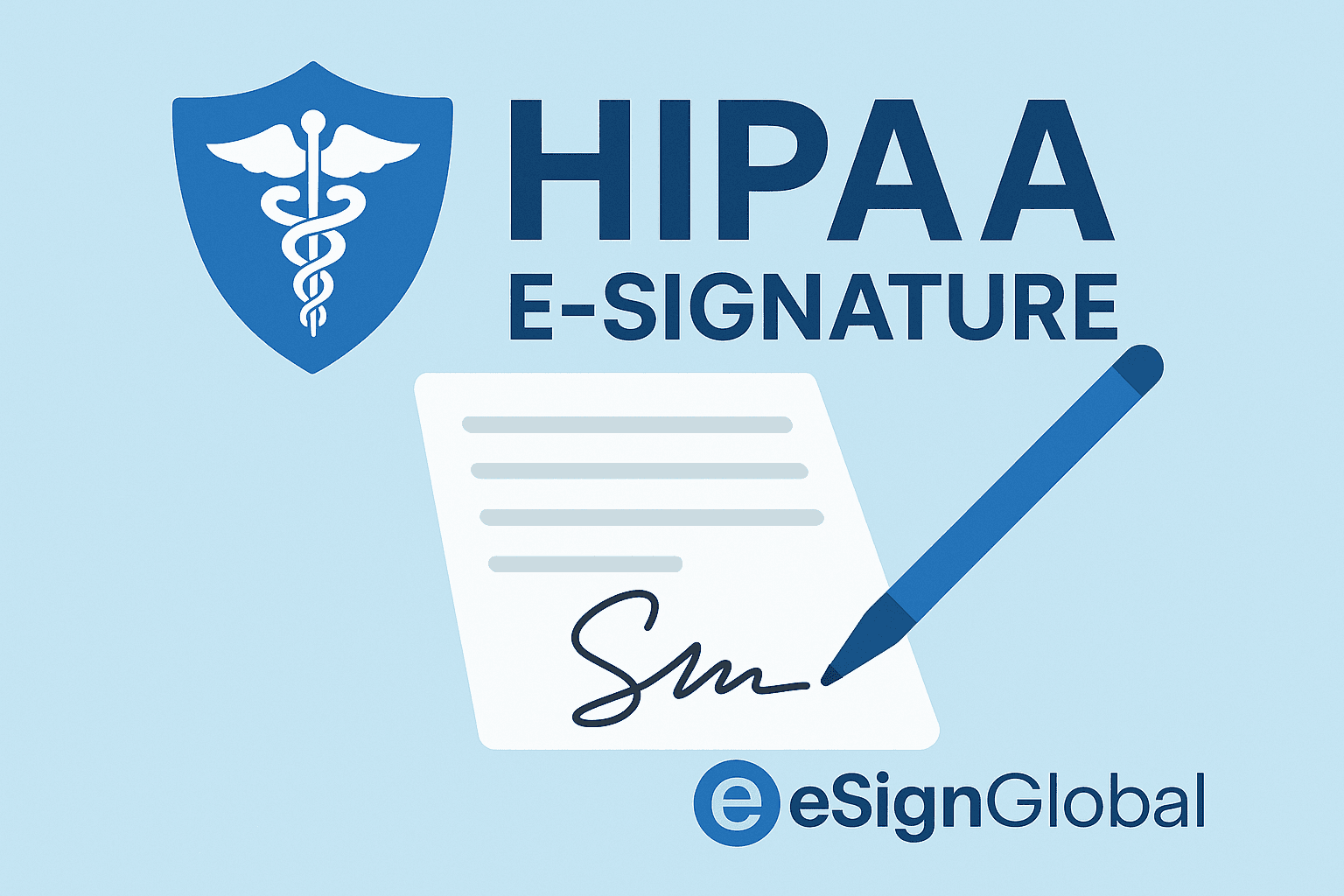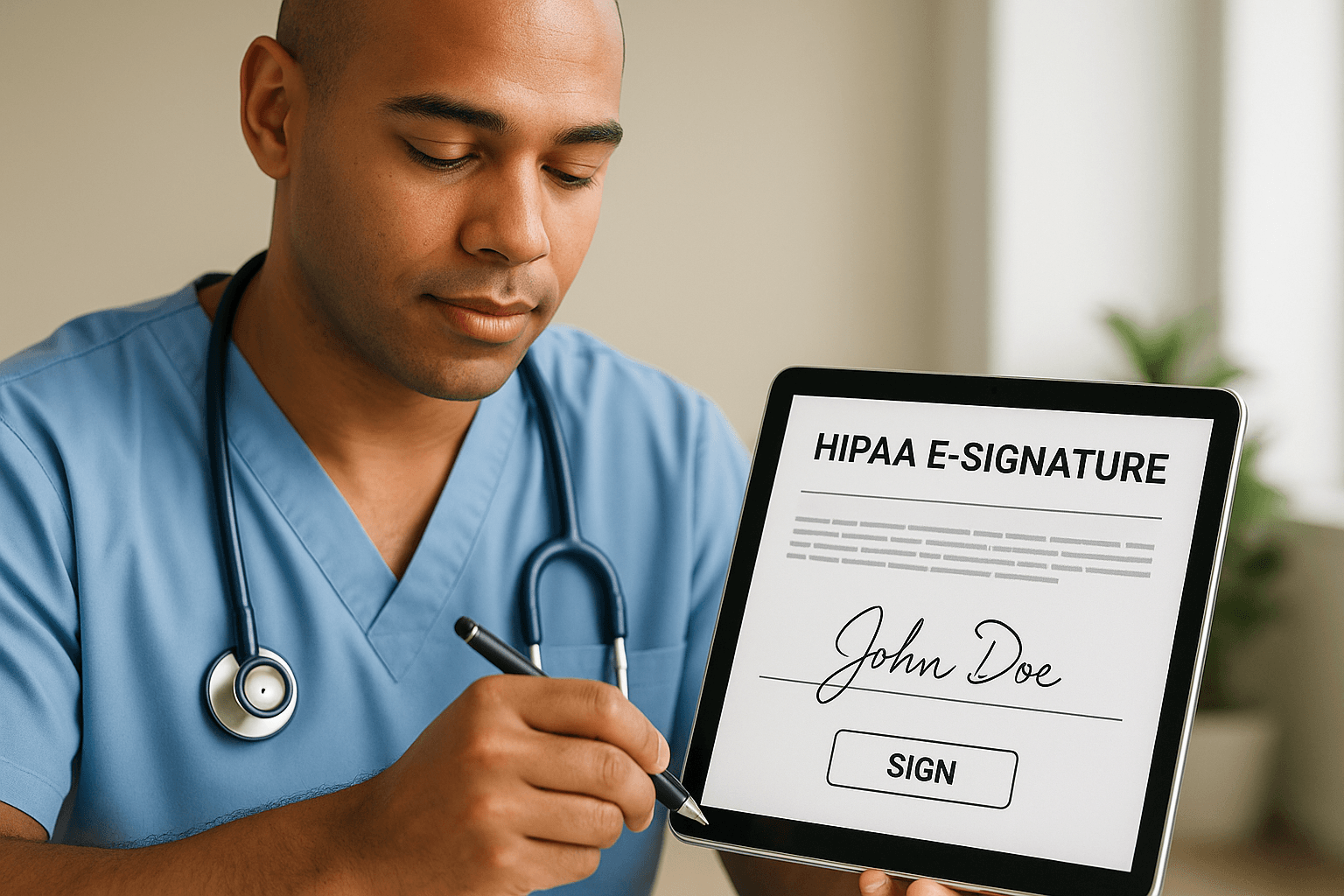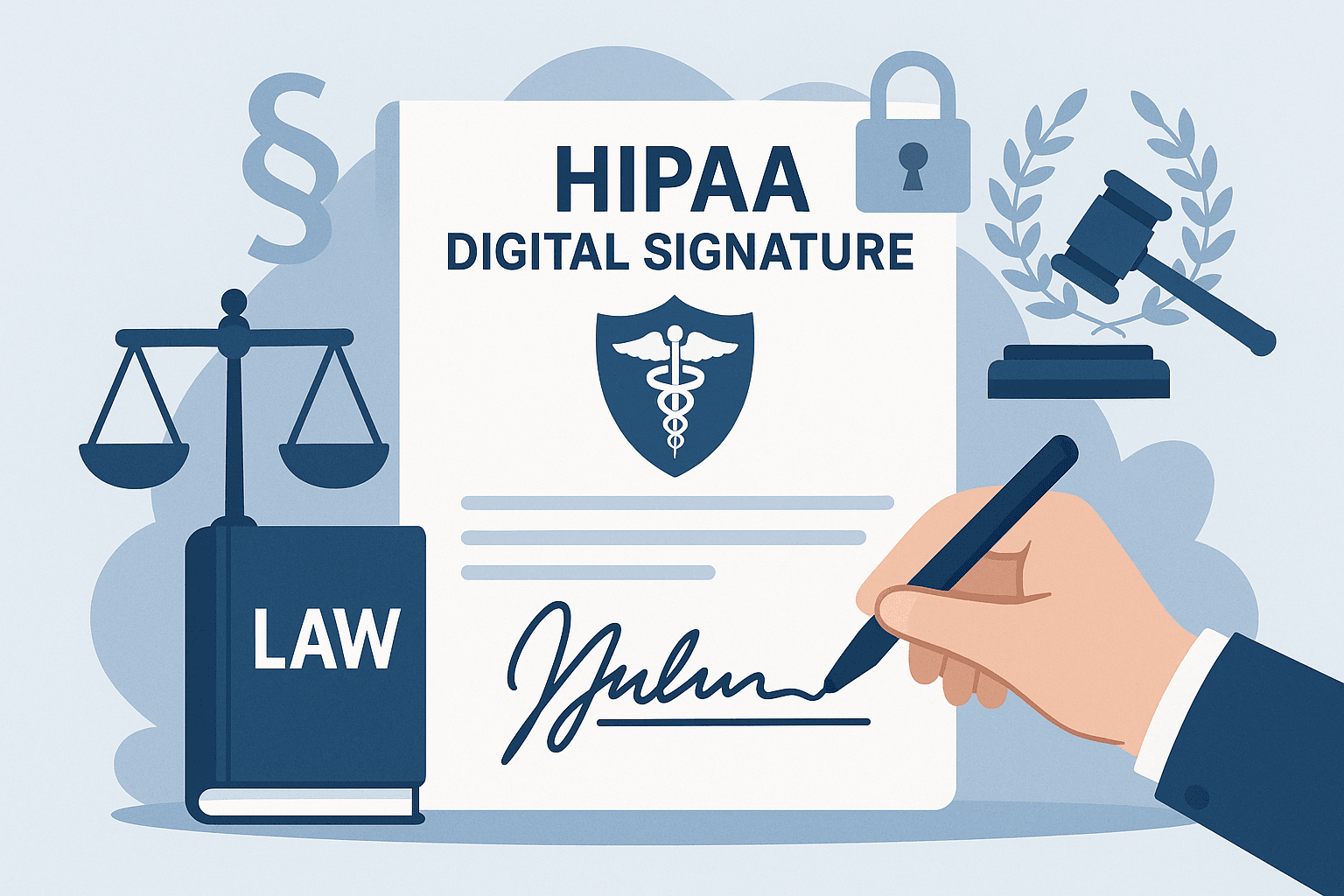WhatsApp or email with our sales team or get in touch with a business development professional in your region.
How to Choose HIPAA-Compliant E-Signature Software?





Navigating HIPAA Compliance in Healthcare e-Signature Workflows: A Practical Guide for Providers
In an increasingly digital healthcare landscape, the use of e-signature technology is transforming the way medical organizations manage patient documentation, consent forms, and administrative records. Yet, within the United States, digital transformation is tightly governed by the Health Insurance Portability and Accountability Act (HIPAA), which sets rigorous standards for safeguarding Protected Health Information (PHI). For healthcare organizations adopting electronic signatures, understanding the interplay between HIPAA compliance and state-level data privacy regulations isn’t simply a matter of best practice—it’s a legal necessity.
The Legal Framework: HIPAA and Its Implications for eSignatures
The HIPAA Privacy Rule and HIPAA Security Rule are the cornerstones of health data protection in the U.S. Enacted by the Department of Health and Human Services (HHS), these rules mandate not only the confidentiality of patient information but also the integrity and availability of that data when in electronic form (ePHI).
For eSignature applications, this means that platforms must implement administrative, physical, and technical safeguards as outlined in 45 CFR §164.312. In particular, systems must ensure:
- Unique user identification and authentication protocols
- Encrypted transmission of documents containing PHI
- Audit trails that track who signed the document, when, and from where
- Tamper-evident documents that retain integrity post-signature
Without meeting these baseline technical standards, the use of electronic signature tools in health contexts can expose providers to significant legal and financial risks.

The Role of Local Regulations and State-Specific Requirements
Beyond federal HIPAA provisions, healthcare providers must contend with a complicated patchwork of local data privacy statutes. States like California (CCPA/CPRA), New York (SHIELD Act), and Texas (HB 300) have enacted laws that impose stricter or supplemental provisions on the use, storage, and transfer of patient information.
For instance, California’s CPRA defines sensitive personal information separately from HIPAA and requires that businesses, including healthcare providers and their vendors, uphold the right of patients to limit the use of such data. Thus, even a HIPAA-compliant e-signature system may not meet CPRA’s consent thresholds unless it includes built-in controls for preference management and automated user access mechanisms.
This complexity underscores the need for platforms like eSignGlobal, which offer built-in modules designed to accommodate state-specific compliance workflows alongside federal requirements.
Key Technical Criteria for a HIPAA-Compliant e-Signature Platform
A HIPAA-aligned e-signature solution must do more than replace paper—it should function as an integrated security layer within the broader Electronic Health Record (EHR) system. From a technical standpoint, these are the non-negotiables:
1. End-to-End Encryption with TLS 1.2 or Higher
Transmission of healthcare data must be protected at all times using transport-layer encryption standards like TLS 1.2 or 1.3. eSignGlobal employs AES-256 encryption at rest and in transit, which meets NIST guidelines and HHS-recommended practices.
2. Advanced Identity Verification
To authenticate signers, the platform must use multi-factor authentication (MFA), such as SMS-based verification, knowledge-based authentication (KBA), or biometrics. eSignGlobal’s SDK allows seamless integration of biometric identity providers, ensuring a frictionless yet secure user experience.
3. Granular Access Controls and Role-Based Permissions
Any platform used in a clinical setting should allow healthcare administrators to define roles and restrict document access based on job function or unit—a principle known as the Minimum Necessary Standard.

4. Immutable Audit Trails and Retention Policies
An essential feature of any HIPAA-compliant application is the audit trail. eSignGlobal maintains a non-editable, time-stamped activity log that includes IP addresses, browser fingerprints, and hash-generated document integrity checks. These logs are essential evidence during OCR audits or in-state certification processes.
Real-World Application: How eSignGlobal Boosts Compliance and Efficiency
In practice, adopting HIPAA-compliant e-signatures reduces the administrative burden associated with physical document processing. Hospitals equipped with eSignGlobal report up to 45% reduction in patient onboarding time and a 60% drop in paperwork re-submissions due to data entry errors. These are not broad marketing statements, but are validated by internal studies at hospital systems across Texas and New York.
In emergency care settings, using a secure mobile interface allows patients or their legal proxies to sign informed consent forms in under two minutes, without printing or scanning. eSignGlobal’s API-centric design means these forms are instantly routed into the hospital’s EHR system, attached to the correct patient record, and locked from unintended manipulation.
Moreover, because eSignGlobal includes automatic document expiration, retention, and access controls, hospitals reduce legal exposure linked to misfiled or outdated consents.

Local Case Study: A Midwestern Health Network’s Deployment Journey
A four-hospital community health system in Illinois, bound by both HIPAA and the state’s Personal Information Protection Act (PIPA), transitioned to eSignGlobal in late 2021. In its deployment phase, the healthcare network prioritized three workflows:
- Patient intake and consent during virtual consultations
- Home healthcare visit documentation
- Employee COVID-19 vaccination records
According to compliance officers on-site, eSignGlobal allowed a seamless transition without the need to rebuild clinical decision support tools. The audit trail and automated archiving squared neatly with the hospital’s existing legal hold and retention schedules. Importantly, PIPA’s Section 10 requirements on breach notification were also integrated into the platform’s real-time alerting systems—allowing IT and compliance branches to receive immediate notice of anomalous access attempts.
Economic and Operational Benefits
Beyond legal compliance, the return on investment for cloud-based, HIPAA-certified e-signature solutions is also compelling. On average, hospitals spend approximately $20 per signed paper document factoring in printing, scanning, couriering, and storage. In contrast, eSignGlobal’s SaaS pricing model, which includes real-time backend integration, brings this down to under $3 per documented transaction.
This cost efficiency does not come at the expense of legal certainty. Since documents signed via eSignGlobal carry court-admissible timestamps and comply with the U.S. Federal ESIGN Act and the Uniform Electronic Transactions Act (UETA), healthcare providers can rely on the evidentiary admissibility of such documents in all 50 states.
Final Thoughts: Prioritizing Long-Term Compliance and Future Readiness
As telemedicine, remote patient monitoring, and AI-enabled diagnostics grow in scope, the underlying documentation infrastructure must also evolve. HIPAA-compliant e-signature systems like eSignGlobal offer a future-proof path—ensuring every consent, directive, and data-sharing agreement is secure, traceable, and compliant with both federal and state-level data governance laws.
For healthcare providers in the U.S., embracing such technology isn’t just an innovation strategy; it is a regulatory necessity wrapped in operational advantage. Choosing a partner like eSignGlobal means aligning your digital transformation with an iron-clad legal framework—and ultimately delivering better, faster, and more secure care.
—
By: A U.S.-Certified Health IT Security Consultant and HIPAA Compliance Strategist, eSignature Industry Expert

Shunfang
Head of Product Management at eSignGlobal, a seasoned leader with extensive international experience in the e-signature industry.
Follow me on LinkedIn
Get legally-binding eSignatures now!
30 days free fully feature trial
Business Email
Get Started
 Only business email allowed
Only business email allowed
Latest Articles


